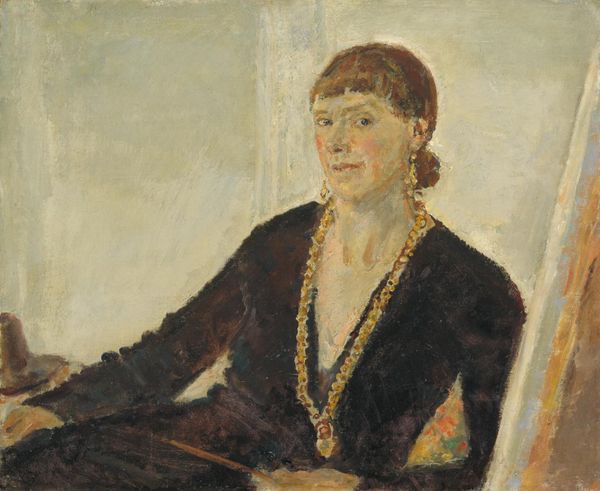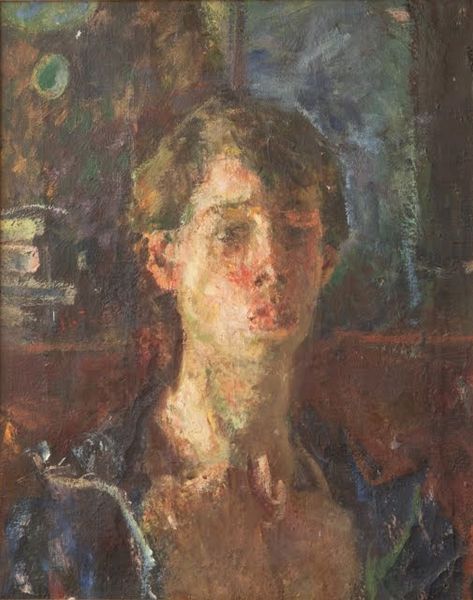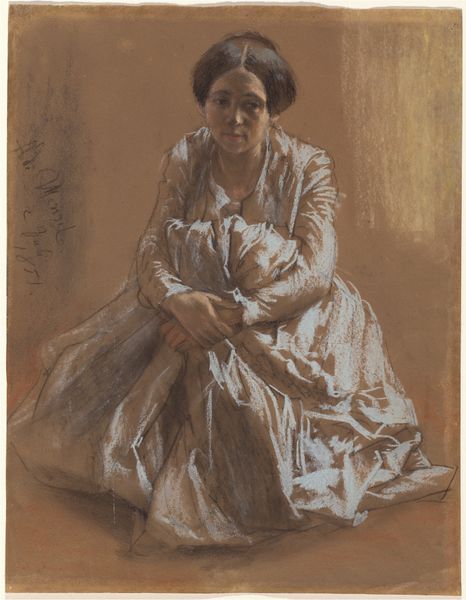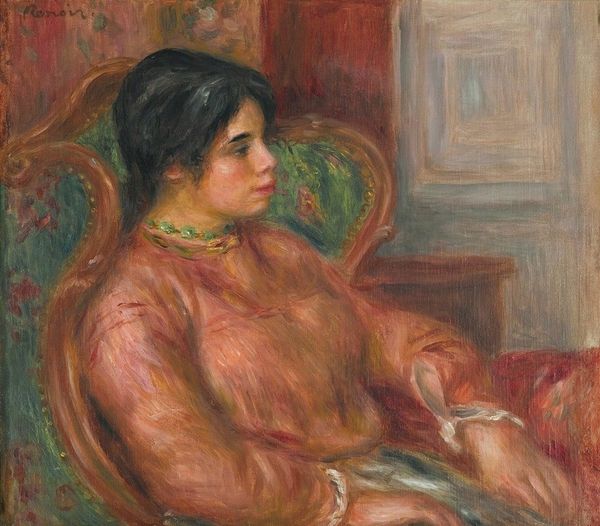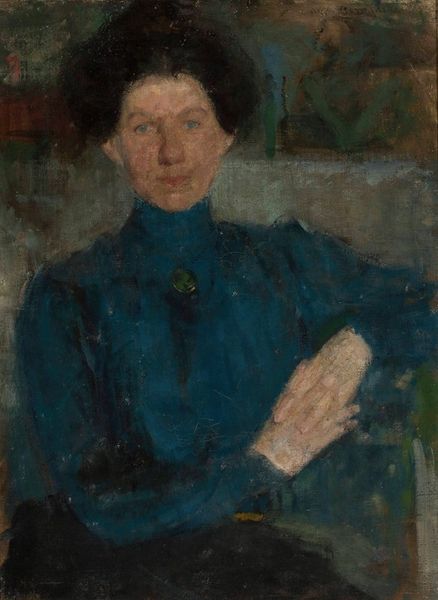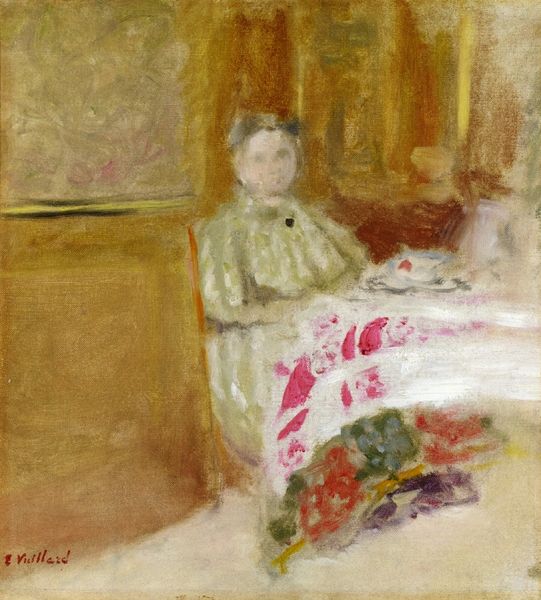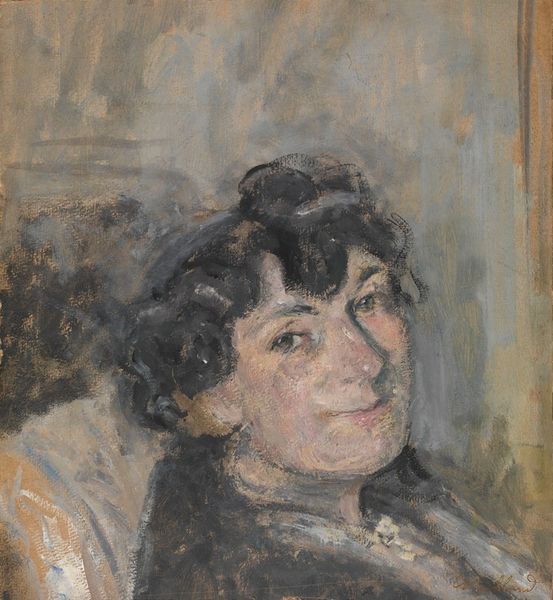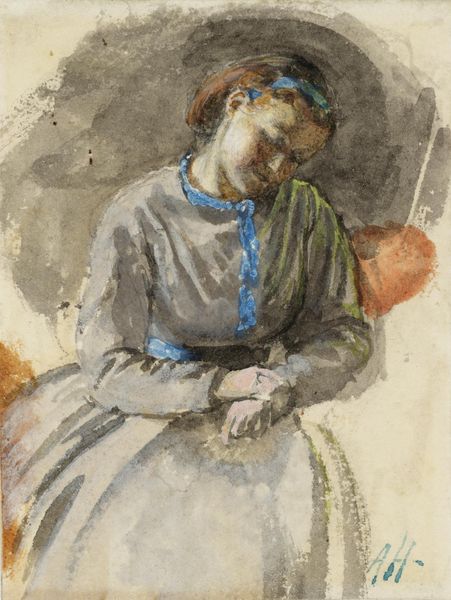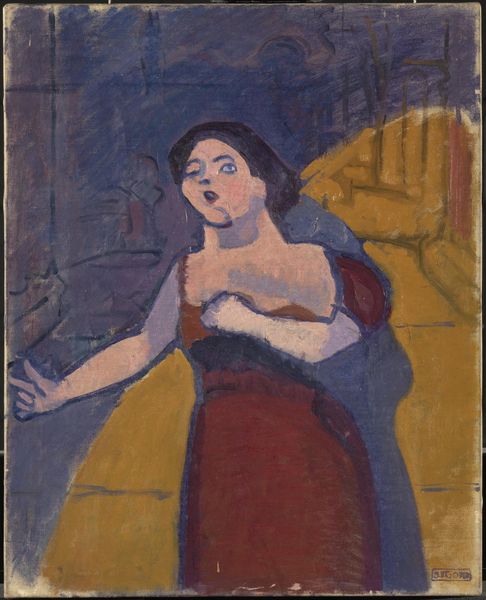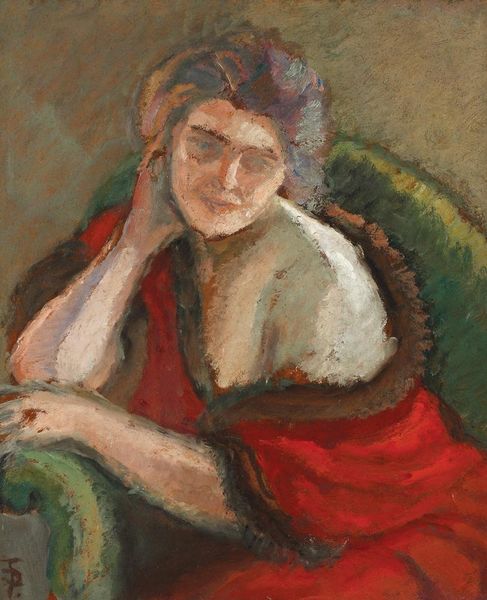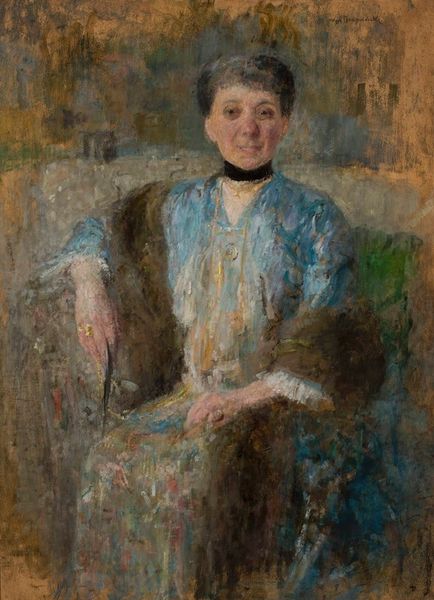
Dimensions: 87.4 cm (height) x 77.3 cm (width) (Netto), 99.2 cm (height) x 89.3 cm (width) x 4.8 cm (depth) (Brutto)
Curator: Here we have Karl Isakson's "Portrait of Mrs. Bertha Brandstrup," completed in 1909. It's currently held in the collection of the SMK, the Statens Museum for Kunst. Editor: It strikes me immediately as a study in quiet intensity. The way she is seated, the forward gaze and that red dress... there is a very grounded essence. Curator: The impasto technique that Isakson uses is indeed striking. You can almost feel the thickness and texture of the oil paint on the canvas. It points towards a very specific materiality; he layers paint strategically to capture the sitter’s character, yes, but also making the viewer aware of the physical process of creation itself. It pushes boundaries as the artist emphasizes brushwork, rather than aiming for hyper-realism or idealized presentation typical for commissioned portraits. Editor: Absolutely. The vibrant hues contribute greatly. Consider the semiotics of the colour palette; the fiery red against the muted backdrop adds complexity, as if hinting at both her social position and interior spirit. The textures of the fabrics almost seem palpable. Note the structure given through the colour—particularly how he uses blues near her legs and face. It all pulls her forward. Curator: Isakson was part of a generation of artists wrestling with shifting social mores. The relative affluence of Mrs. Brandstrup's garment underscores her standing, though her countenance bears traces of daily labour. I wonder about the exchange involved between sitter and artist—was it an even trade of wealth and status, or did this transaction have some underlying tension to it? Editor: That's an intriguing point, though, viewing this as purely an economic or labor exchange misses out how the artist uses light to further describe volume of her body through the rendering of the soft fabrics in her lap and dress, really setting her in space, grounding her physically but making a comment about where her strength lies. Isakson almost seems interested in presenting a three dimensional rendering, to define that volume beyond the purely pictorial plane. Curator: That careful layering creates the space she inhabits but also perhaps reflects the societal layers she navigated as a woman of her time. The materiality, the paint, becomes a sort of mediator between subject, painter and social norms. Editor: Ultimately, Isakson invites viewers into a layered experience.
Comments
No comments
Be the first to comment and join the conversation on the ultimate creative platform.
